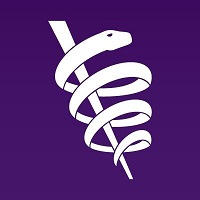 The American Medical Association (AMA) recently published its new annual analysis (PDF) of pharmacy benefit manager (PBM) markets confirming low competition among these middlemen in the pharmaceutical supply chain and high vertical integration of PBMs with health insurance companies.
The American Medical Association (AMA) recently published its new annual analysis (PDF) of pharmacy benefit manager (PBM) markets confirming low competition among these middlemen in the pharmaceutical supply chain and high vertical integration of PBMs with health insurance companies.
“The call for increased regulatory oversight of PBM business practices is overwhelmingly welcomed by physicians as a check against possible anticompetitive harm resulting from low competition and high vertical integration in the PBM industry,” said AMA President Bruce A. Scott, M.D. “The findings from the new AMA analysis warrant attention as Congress and the administration continue their work to protect patients and ensure prescription drugs remain affordable and accessible. The AMA urges careful monitoring, and intervention when needed, of both horizontal and vertical integration to ensure competition in PBM and health insurance markets.”
Based on 2022 data on commercial and Medicare Part D prescription drug plan (PDP) enrollees, the AMA analysis is the most current snapshot of PBM market concentration at both the national and PDP region levels. It also measures the extent of vertical integration between insurers and PBMs.
Competition in PBM markets
Competition in PBM markets is assessed based on three functions for which insurers typically hire an external PBM: rebate negotiation, retail network management and claims adjudication. The findings are similar across those three functions, so the findings reported below focus on rebate negotiation.
The analysis lists national-level shares of the 10 largest PBMs. It finds that:
- The four largest PBMs collectively have a 70% share of the national PBM market.
- CVS Health is the largest PBM (21.3% market share), followed by OptumRx (20.8%), Express Scripts (17.1%), and Prime Therapeutics (10.3%).
- At the local level, the average PBM market is highly concentrated according to federal antitrust guidelines.
- Eight-two percent of PDP region-level PBM markets are highly concentrated.
- This indicates that only a few PBMs supplied insurers with PBM services and suggests low competition among PBMs.
Vertical integration of insurers and PBMs
The analysis found significant vertical integration between insurers and PBMs.
- Nationally, insurers that are vertically integrated with a PBM covered 72% of people with a commercial or Medicare Part D PDP.
- The share of people covered by an insurer that is vertically integrated with a PBM is higher in the Medicare Part D market (77%) than the commercial PDP market (69%).
- At the PDP region level, an average of 70% of people are covered by an insurer that is vertically integrated with a PBM.
- There is wide variation across PDP regions, with some having little vertical integration between insurers and PBMs, while others are almost entirely vertically integrated.
Drug insurer market shares
The analysis also lists national-level shares of the 10 largest PDP insurers and ranks each according to the commercial, Medicare Advantage PDP, and standalone PDP markets, as these are the PDP benefits managed by the PBMs. UnitedHealth Group is the largest commercial PDP and Medicare Advantage PDP insurer, as well as the third largest in standalone PDP with 13.0%, 28.2%, and 17.6% shares, respectively. Closely behind in the commercial market is Kaiser with an11.4% share; however, Kaiser is fourth with a 6.9% share in the Medicare Advantage PDP market and nonexistent in standalone PDP. CVS Health is the biggest insurer in the standalone PDP market with 25.6% share, where Centene follows it with a 17.8% share.
The analysis of competition and vertical integration in PBM markets adds to the AMA’s work to shine a light on lack of market competition in the health insurance industry. Protecting patients and physicians from anticompetitive harm will continue to be a vital issue of public policy for the AMA, the federation of medicine, and the nation’s physicians. The AMA website offers additional information on the AMA’s efforts against anticompetitive mergers.
About the American Medical Association
The American Medical Association is the physicians’ powerful ally in patient care. As the only medical association that convenes 190+ state and specialty medical societies and other critical stakeholders, the AMA represents physicians with a unified voice to all key players in health care. The AMA leverages its strength by removing the obstacles that interfere with patient care, leading the charge to prevent chronic disease and confront public health crises and, driving the future of medicine to tackle the biggest challenges in health care.
